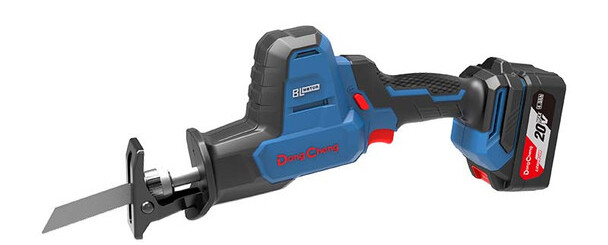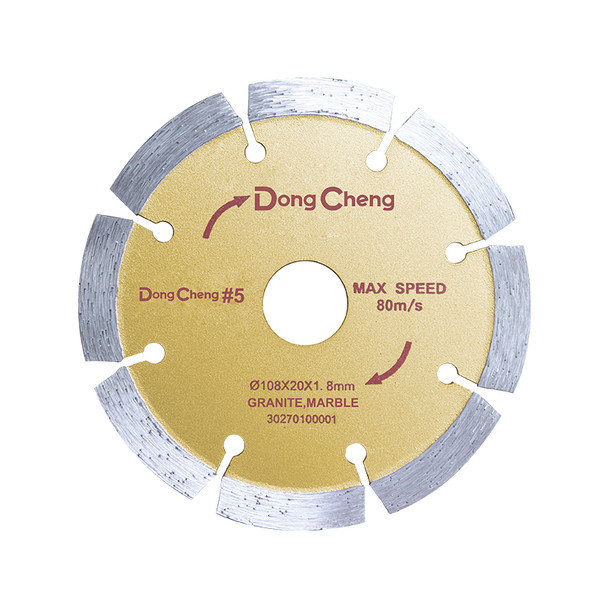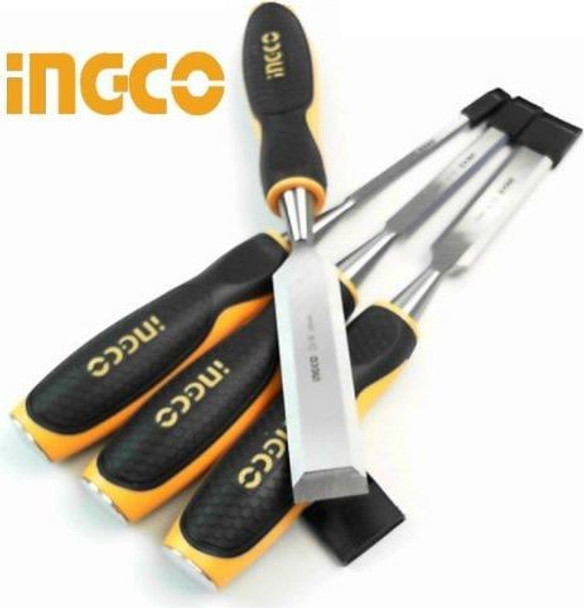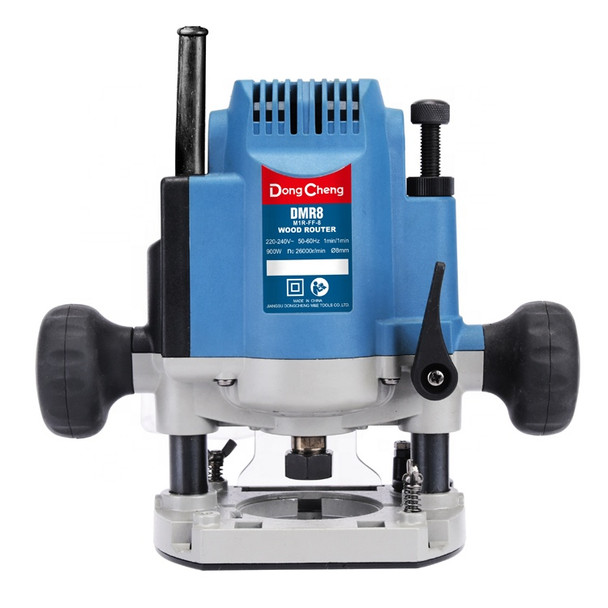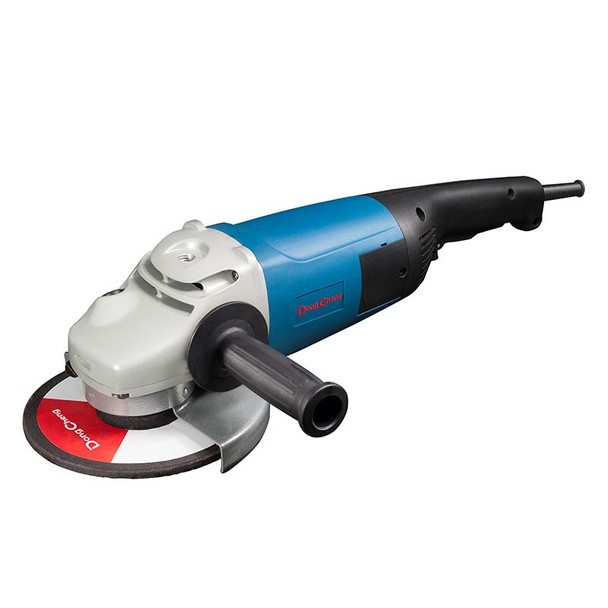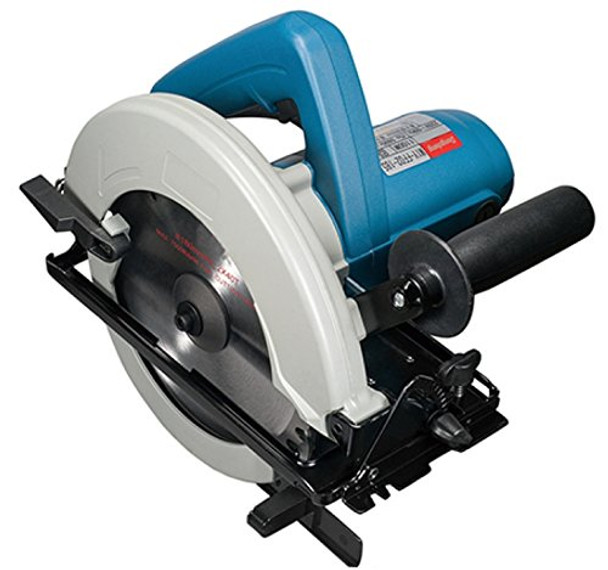Best Cutting Tools for Precision Work: A Guide for Professionals in Nigeria
Key Takeaways
Introduction
Precision work is fundamental to various industries, especially in Nigeria, where sectors like metalworking, woodworking, and crafting play a crucial role in the economy. Whether you're fabricating metal parts, crafting fine furniture, or creating detailed craftwork, the quality of your cutting tools is vital to achieving excellence. Using the right tools ensures efficiency, safety, and high-quality results.
Precision cutting tools for wood working include tools like Saws, Planers,and Chisels are specialized instruments designed for tasks requiring high accuracy and detail. These tools are essential in industries like metalworking, woodworking, and crafting, where precision determines the quality of the final product. The choice of tools is influenced by several factors, including the material's hardness, the tool's geometry, and the specific task—whether cutting, shaping, or finishing.
This guide is crafted to help professionals in Nigeria make informed decisions when selecting cutting tools for precision tasks. We’ll explore the various types of cutting tools available, provide insights into selecting the right tools based on your material and project needs, and share tips on maintaining these tools for long-term use.
DongCheng Cordless brushless reciprocating saw
Cutting Tools for Metalworking
Metalworking is a vital industry in Nigeria, supporting construction, manufacturing, and automotive repair sectors. Precision in metalworking ensures that components fit together correctly and function as intended, making the choice of cutting tools critical. Find some cutting tools suitable for meta working below;
1. Lathe Tools:
These are essential for turning operations, where the metal workpiece is rotated against a cutting tool. Lathe tools, including turning tools, facing tools, and threading tools, are designed to create cylindrical shapes, threads, and smooth surfaces on various metals such as steel, aluminium, and brass.
2. Milling Cutters:
Used in milling machines, these cutters remove material from a workpiece by advancing into it with a rotating tool. Common types include end mills, slab mills, and face mills, which are used for tasks ranging from simple surface milling to complex contouring. Their application varies depending on the metal's hardness and the desired finish.
3. Cutting Blades:
Blades like band saws, hacksaws, and cold saws are used for slicing through metal bars, rods, and sheets. Each blade type is suited to different thicknesses and cutting speeds, making them versatile tools in the metalworking process.
4. Specialty Tools:
Reamers, broaches, and punches are designed for creating precise holes and shapes in metal. Reamers are used to finish pre-drilled holes to exact sizes, broaches are used to cut specific shapes like keyways, and punches are employed for creating holes or indents in metal sheets.
Diamond Cutting Blade for Granite, Marble, 108mm
Material-Specific Recommendations for Cutting Tools used for Metal working:
1. Steel:
Use high-speed steel (HSS) or carbide-tipped tools for their durability and heat resistance.
2. Aluminium:
Opt for tools with a polished surface to reduce material buildup and ensure a smooth cut.
3. Copper:
Choose tools with sharp edges and high rake angles to avoid deformation and achieve clean cuts.
Tips for Selection and Maintenance of Metal working cutting tools:
1. Selection Tips:
Choose tools based on the metal's hardness and thickness, the required precision, and the expected production volume. For example, carbide-tipped tools are ideal for high-production environments due to their longevity, while HSS tools are more versatile and suitable for general-purpose use.
2. Maintenance Tips:
Regularly sharpen blades and cutters to maintain cutting accuracy. Inspect tools frequently for wear and tear, and ensure they are kept clean and well-lubricated. Proper storage in a dry, safe environment will also prevent rust and prolong tool life.
4PCS Wood Chisel - INGCO
Cutting Tools for Woodworking
Woodworking is an integral craft in Nigeria, deeply embedded in the construction, furniture-making, and artisan sectors. Precision in woodworking is crucial for creating high-quality products that meet both aesthetic and functional standards. The choice of cutting tools can significantly impact the final appearance and durability of wooden items.
1. Saws:
Saws are a fundamental tool in woodworking. Circular saws are used for cutting straight lines in large sheets of wood, while band saws are versatile for cutting curves and irregular shapes. Jigsaws are excellent for intricate cuts and detailed work.
2. Chisels and Gouges:
These tools are essential for carving and detailed work. Chisels come in various shapes and sizes and are used to create precise cuts, grooves, and joints in wood. Gouges, with their curved blades, are used for shaping and hollowing out wood, particularly in decorative work.
3. Router Bits:
Routers are versatile power tools used for hollowing out areas in wood. Router bits come in different profiles and are used for edging, grooving, and shaping wood, allowing for complex designs and finishes.
4. Planers and Shapers:
Planers are used to flatten and smooth wood surfaces, ensuring uniform thickness across the workpiece. Shapers, similar to routers but more robust, are used for creating profiles and complex shapes in wood, especially in large-scale woodworking projects.
Wood-Specific Considerations when choosing cutting tools:
1. Hardwood vs. Softwood:
The type of wood determines the choice of tools. Hardwoods like oak and mahogany require more robust tools with sharp blades, while softwoods like pine and cedar are easier to cut and shape, requiring less force and less wear on the tools.
2. Desired Finish:
The finish of the woodwork, whether smooth, textured, or intricate, influences the choice of cutting tools. For example, a fine chisel or router bit would be necessary for detailed, high-quality finishes.
DongCheng Wood Router 900W 8MM DMR8
Tips for Selection of wood cutting tools:
Consider the specific woodworking project and the type of wood being used when selecting tools. High-quality, sharp tools are essential for precise, clean cuts and long-term usability. Learn more below;
1. Project-Specific Needs:
The choice of tools should be aligned with the specific project requirements. For instance, building a cabinet requires tools like table saws, routers, and planers, while a smaller project like a wooden sculpture might need chisels, gouges, and scroll saws.
2. Tool Quality:
Investing in high-quality tools ensures better performance and durability. Brands known for precision and durability in Nigeria’s market include Makita, Bosch, and Stanley. These tools might have a higher upfront cost but offer better results and longer service life.
Tips for Maintenance of wood cutting tools
Keep woodworking tools sharp to ensure clean cuts and reduce the risk of accidents. Regularly oil and clean tools to prevent rust and ensure smooth operation. Proper storage, such as in tool boxes or on pegboards, can also prevent damage and prolong the lifespan of these tools.
1. Sharpening:
Regularly sharpen blades, chisels, and other cutting tools to maintain cutting precision. Dull tools can cause accidents and lead to poor-quality work.
2. Cleaning:
After use, clean tools to remove wood particles and resin, which can cause rust and reduce tool efficiency. For power tools, ensure the vents are clear to prevent overheating.
3. Storage:
Store tools in a dry place to prevent rust. Use protective covers for blades and cutting edges to avoid accidents and maintain sharpness.
Additional Types of Precision Cutting Tools for Woodworking:
1. Rasps and Files:
These hand tools are used for shaping and smoothing wood, particularly in fine detailing and finishing work. Rasps are coarser and remove more material, while files offer a finer finish.
2. Scroll Saws:
Scroll saws are specialized tools for making intricate cuts and patterns in wood. They are ideal for detailed work such as creating decorative elements in furniture or wooden crafts.
3. Dovetail Saws:
Specifically designed for cutting dovetail joints, these saws are essential for furniture making where precision in joint construction is crucial. They have fine, sharp teeth for clean, accurate cuts.
Cutting Tools for Crafting
Crafting is a diverse field in Nigeria, encompassing everything from textile work to leather crafting and fine arts. Precision cutting tools in crafting are essential for achieving the fine details that define high-quality handmade products.
Types of Precision Cutting Tools for Crafting:
1. Precision Knives:
Tools like Stanley Knife snap-off and utility knives are fundamental in crafting for cutting paper, cardboard, and other thin materials. They are also used for detailed trimming and shaping tasks in various crafting projects.
2. Scissors and Shears:
High-quality scissors and shears are vital for cutting fabrics, leather, and other flexible materials. These tools come in various sizes and shapes to suit different tasks, such as fabric scissors for textiles and pinking shears for decorative edges.
3. Rotary Cutters:
Rotary cutters are used in quilting and fabric crafting, offering precision and speed in cutting straight or curved lines through multiple layers of fabric. They are also useful in paper crafting for cutting clean, straight edges.
4. Specialty Tools:
Depending on the craft, specialized tools like glass cutters for stained glass projects, leather punches for creating holes in leather, and jeweler’s saws for cutting intricate metal pieces are essential. These tools allow for precision in creating detailed, high-quality crafts.
DongCheng Angle Grinder DSM02-230B
Material-Specific Recommendations for Cutting Tools used for Crafting:
- Fabric: For cutting fabrics, use rotary cutters or sharp fabric scissors. Avoid using these tools on other materials to keep them in optimal condition.
- Leather: Use leather shears or rotary cutters specifically designed for cutting thick, tough materials without fraying the edges.
- Paper and Cardboard: Precision knives with replaceable blades are ideal for detailed cuts in paper and cardboard, ensuring clean edges and intricate designs.
Tips for Selection and Maintenance:
- Selection: Choose tools that are comfortable to use and suitable for the material and detail level required in your craft. Ergonomically designed handles can reduce fatigue during extended use.
- Maintenance: Regularly replace blades on precision knives to ensure clean cuts. Scissors and shears should be sharpened periodically and used exclusively for their intended materials to prevent dulling.
Comparing Cutting Tools: Metalworking, Woodworking, and Crafting
When working across different materials and projects, it’s essential to understand how cutting tools perform in various contexts. While each category of tools—metalworking, woodworking, and crafting—has its specialized tools, some tools are versatile and can be used across multiple disciplines.
Performance Comparison:
- Metalworking Tools: Generally more robust and designed to handle the hardness of metals. They are often not suitable for woodworking or crafting due to their size, weight, and cutting angles.
- Woodworking Tools: These tools are typically designed for softer materials. While they can sometimes be used in crafting, they are usually not durable enough for metalworking.
- Crafting Tools: Precision tools for crafting are generally lighter and smaller, focusing on fine details. They may be too delicate for metalworking but are often versatile enough for use in both woodworking and crafting projects.
Versatility and Specialization:
- Versatile Tools: Tools like precision knives and rotary cutters can be used in both woodworking and crafting, making them ideal for professionals working in multiple disciplines.
- Specialized Tools: Lathe tools, router bits, and specialty crafting tools like jeweler’s saws are highly specialized and offer the best performance within their specific applications.
Cost-Effectiveness:
- Initial Investment: High-quality tools may require a higher upfront
Comparing Cutting Tools: Metalworking, Woodworking, and Crafting
Cost-Effectiveness
- Initial Investment: High-quality tools often come with a higher price tag, but they are usually more durable and perform better over time, making them cost-effective in the long run. For example, investing in carbide-tipped lathe tools or premium-grade chisels can save money by reducing the need for frequent replacements.
- Tool Longevity: Tools designed for specific tasks tend to last longer when used correctly. For instance, using woodworking saws exclusively on wood and metalworking tools strictly on metals preserves their cutting edges and extends their lifespan.
- Maintenance Costs: Regular maintenance is key to maximizing the lifespan of cutting tools. This includes sharpening, cleaning, and proper storage. While maintenance may incur some costs, these are generally lower than the expense of frequently replacing worn-out tools.
Tips for Selecting the Right Cutting Tools Based on Material and Project Requirements
Choosing the right cutting tool involves understanding both the material you're working with and the specific requirements of your project. Below are key considerations for selecting the best tool for the job:
1. Material Considerations:
- Hardness: Harder materials like steel or hardwood require tougher, more durable cutting tools, such as carbide-tipped tools or diamond-coated blades. Softer materials, like pine wood or fabric, can be worked on with less robust tools.
- Thickness: Thicker materials may require tools that can handle deep cuts, such as heavy-duty saws or deep-reach chisels. For thin materials, precision knives or light-duty rotary cutters are more appropriate.
- Flexibility: Flexible materials like fabrics or thin metals need tools that provide control and precision without causing distortion. Scissors, shears, and precision knives with adjustable blade tension are ideal for these tasks.
2. Project Requirements:
- Precision: For projects that require intricate details, such as crafting or fine woodworking, select tools designed for precision, like fine-toothed saws, sharp chisels, and precision knives.
- Speed: In high-production environments where speed is critical, choose tools that allow for quick, efficient work, such as power saws or CNC milling machines. These tools can cut down on production time while maintaining accuracy.
- Finish Quality: The desired finish of the project affects tool choice. For example, a smooth, polished finish on wood requires sharp, high-quality planers and sanders, while a rougher finish might be achieved with a coarser tool.
3. Ergonomics and Safety:
- Comfort: Tools with ergonomic handles reduce strain and fatigue during prolonged use, which is especially important for professionals working long hours.
- Safety Features: Select tools with built-in safety features, such as retractable blades on precision knives or guards on power saws, to minimize the risk of injury.
4. Versatility:
- Multi-Use Tools: Consider tools that can be used across multiple projects and materials. For example, a versatile rotary tool can be fitted with different bits for cutting, sanding, or engraving, making it a valuable addition to any professional’s toolkit.
- Tool Compatibility: Ensure that the tools you select are compatible with any existing equipment or accessories you have, such as blades, bits, or attachments.
DongCheng-ELECTRIC CIRCLAR SAW-DMY185
Maintaining Cutting Tools for Longevity and Performance
Proper maintenance is crucial for keeping cutting tools in optimal condition, ensuring they perform efficiently and last longer. Here’s how to maintain your tools:
Sharpening:
- Manual Sharpening: Tools like chisels, knives, and plane blades require regular sharpening with a whetstone or sharpening guide. Keeping these tools sharp reduces the effort needed for cutting and enhances precision.
- Mechanical Sharpening: For tools like saw blades or milling cutters, use specialized sharpening machines or services to maintain sharpness. Regular sharpening helps maintain cutting speed and accuracy.
Cleaning:
- Post-Use Cleaning: Always clean tools after use to remove any debris, such as wood shavings, metal filings, or fabric lint. For metal tools, wipe them down with a cloth to remove any moisture, which can cause rust.
- Deep Cleaning: Periodically perform a deep clean of your tools, especially those used in environments prone to dust or moisture. Use appropriate cleaning agents for different materials—metal cleaners for metal tools and gentle soap solutions for wooden handles.
Lubrication:
- Lubrication: Metal cutting tools, particularly those used in high-friction applications like drilling or sawing, should be lubricated regularly to prevent overheating and reduce wear. Use machine oil or a similar lubricant, applied sparingly, to moving parts.
Storage:
- Dry Environment: Store tools in a dry, climate-controlled environment to prevent rust and corrosion. Consider using silica gel packs in toolboxes to absorb moisture.
- Organized Storage: Keep tools organized in toolboxes, cabinets, or on pegboards to prevent damage and make them easy to find. Use blade guards or sheaths to protect cutting edges when not in use.
Regular Inspections:
- Check for Wear: Regularly inspect your tools for signs of wear or damage, such as dull blades, chipped edges, or loose handles. Address these issues immediately to prevent accidents or subpar work.
- Replace Worn Parts: Replace any worn or damaged parts, such as blades or handles, to ensure the tool remains safe and effective.
Common Mistakes to Avoid When Using Cutting Tools
Precision work requires not only the right tools but also the correct usage to achieve the best results. Here are common mistakes to avoid:
- Using the Wrong Tool for the Job: One of the most common mistakes is using a tool that is not designed for the specific material or task. For instance, using a woodworking chisel on metal can damage the tool and produce poor results.
- Ignoring Tool Maintenance: Failing to sharpen blades or clean tools regularly can lead to inefficient cutting, rough finishes, and potential accidents. Proper maintenance is key to prolonging the life of your tools and ensuring consistent performance.
- Overlooking Safety Precautions: Skipping safety measures, such as wearing protective gear or using guards, can lead to serious injuries. Always follow the manufacturer's safety guidelines and use tools as intended.
- Applying Excessive Force: Forcing a tool through material can lead to damage, both to the tool and the workpiece. Precision cutting tools are designed to work efficiently with minimal force when used correctly.
- Neglecting Ergonomics: Using tools that are uncomfortable or poorly designed can lead to strain or injury over time. Choose ergonomically designed tools that reduce fatigue and improve control.
Related Article
Mastering Woodworking: Top-Rated Electric Power Tools for Precision and Efficiency
10 Tips on Simple Ways to Keep Your Power Tools in Good Working Order
Frequently Asked Questions:
1. What are the best cutting tools for metalworking in Nigeria?
The best cutting tools for metalworking include lathe tools, milling cutters, and cutting blades like band saws. Brands such as Makita and Bosch are known for their durability and precision, making them ideal for professional use in Nigeria.
2. How do I maintain my woodworking tools to ensure they last longer?
Regularly sharpen blades, clean tools after each use, and store them in a dry environment. Use oil or other lubricants to protect metal parts from rust, and keep tools organized to prevent damage.
3. Can I use the same cutting tools for metalworking and woodworking?
Generally, no. Metalworking tools are typically too robust for woodworking and can damage the wood. Similarly, woodworking tools may not withstand the hardness of metal. It's best to use tools designed specifically for each material.
4. What safety precautions should I take when using precision cutting tools?
Always wear protective gear, such as gloves and safety glasses. Ensure tools are properly maintained and sharpened to avoid accidents. Follow the manufacturer’s instructions, and never force a tool through the material.
5. Where can I purchase high-quality cutting tools in Nigeria?
High-quality cutting tools can be purchased from reputable suppliers like Tikweld. They offer a wide range of tools suitable for metalworking, woodworking, and crafting.
Conclusion
Selecting the right cutting tools is crucial for professionals in Nigeria who demand precision, efficiency, and quality in their work. Whether you are involved in metalworking, woodworking, or crafting, understanding the specific tools best suited for each material and task can significantly impact the outcome of your projects. By investing in high-quality tools, maintaining them properly, and adhering to best practices, you can achieve superior results and extend the life of your equipment.
In a competitive and diverse market like Nigeria, where craftsmanship is highly valued, the right tools are not just a necessity but a cornerstone of your success. Equip yourself with the best, and let your work reflect the precision and excellence that these tools are designed to deliver.
Investing in the right cutting tools is essential for any professional in Nigeria looking to achieve precision in their work. Whether you’re involved in metalworking, woodworking, or crafting, Tikweld has the tools you need to elevate your projects to the next level.
Explore our comprehensive selection of high-quality cutting tools, including top brands like Makita, Bosch, and Stanley, all available at competitive prices. Visit Tikweld today to find the perfect tools for your precision tasks. Our team of experts is also available to help you select the best tools for your specific needs.


